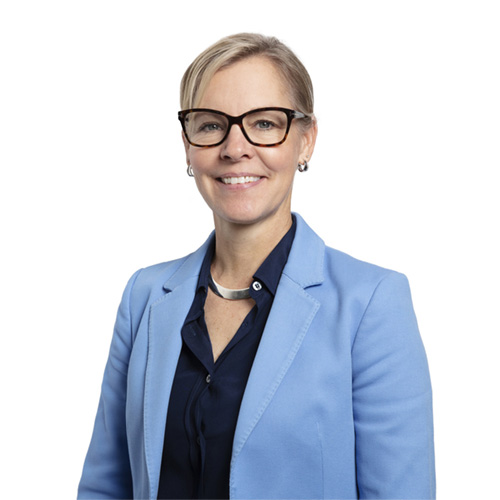
What would you describe as your most memorable achievement in the enterprise tech industry?
Of all industries, ours has had the greatest influence on the Digital Transformation we’re experiencing across society, in our homes and in our workplaces. As a pioneer of the digital age, it’s our duty to address the next big challenge: to make sure our people reflect the diversity of the markets we serve; and to make sure our industry strives for sustainability, to leave our people and planet in a better place.
Three of my proudest times have been in the last six months. First, I led the introduction of an industry-wide Inclusion and Diversity score – a benchmarking tool that uses machine learning-based sentiment analysis to provide a metric, measuring a company’s progress in terms of inclusion. Second, in the autumn we were awarded the EcoVadis platinum rating, placing us in the top 1% of global businesses for our outstanding commitment to ESG, so that is a huge honour. Finally, in November, we announced our intention to purchase Lumen EMEA, which marked the beginning of a very exciting journey.
What first made you think of a career in technology?
I have always loved technology. I was one of the first kids to have an Atari game system back in the 1980s and grew up fixing and building things as a kid. My dad was a master electrician and he was one of the first people in our small town to install TV satellites. He often took us with him on the installs and I learned how communication worked through the air. Later in life he helped me build a science project that was a light-chaser using LED diodes. I grew up with technology, I loved learning about it and putting the components together to make it work.
My first introduction to computers was in high school, a programming class in PASCAL. I really enjoyed software development and this led me to gaining my Bachelor’s degree in Business Administration and Management Information Systems at New Mexico State University, I started my career in network engineering and then progressed into sales.
Around nine years ago, I moved to Europe and held several leadership roles with the networking solutions provider, Ciena. In 2018 I joined Colt as the Chief Commercial Officer (CCO) and then two years later, in May 2020, I was appointed CEO. As CEO, I’m responsible for delivering Colt’s vision to be the digital infrastructure company that the world’s leading businesses choose to connect with.
What style of management philosophy do you employ with your current position?
Colt is built on generating extraordinary connections – for our customers, partners and people. A huge part of my philosophy is focused on the importance of driving this connectivity both from a technology and digital infrastructure perspective and from a human perspective. Connecting with people through honest engagement, being empathetic with a mission to inspire; it creates communities and helps reduce loneliness and isolation and ultimately makes the world a better place to live.
I’m also a champion for flexible working. I read a report recently in The Times that said hybrid workers eat better, sleep better and get more exercise, and 66% of the 2,000 people surveyed reported an improvement in their mental health. This is the biggest, most transformational opportunity for workers that we’ve had for generations. Henry Ford was the first advocate for the 9-5 and that was almost 100 years ago. We can’t let this opportunity for change fall by the wayside.
What do you think is the current hot talking point within the enterprise tech space?
Conversations around AI are happening absolutely everywhere at the moment. We’ve known it was coming and now we see its power when we apply it in business: driving productivity, for example, and supporting the customer experience. It’s going to be fascinating to watch how it’s influencing companies’ D, E & I goals too: it could help write job descriptions without unconscious bias; it can support neurodivergent workers with editing and proofing content and it can boost accessibility.
Also, ESG continues to dominate conversations across the industry and will continue to do so as we find better, cleaner, sustainable ways of working and work hard to overcome disparity and inequity at every level. One study I read recently by Vandana Singh at the University of Tennessee found that ‘Women make up only 27% of the workforce in the technology industry. Half of them are likely to quit before the age of 35 and 56% are likely to quit by midcareer.’ We need to get to the point where this isn’t even a discussion topic because we’ve removed the barriers that drive inequality, but as an industry we’re still a long way off.
How do you deal with stress and unwind outside the office?
I’ve always enjoyed sport and believe that there’s a huge connection between body and mind. I love lifting weights, HIIT workouts and long walks in the morning to get my day started. I also believe that a few minutes of breathing and meditation set the stage for a more thoughtful approach to people and projects. I use various apps like Calm and Balance and follow Sadhguru or Wim Hof.
I also believe that not all stress is ‘bad’. Stress can be good if you have the right mindset towards it. It can help you grow, create deeper connections with others and enable you to challenge yourself. If seen as good, Kelly McGonigal, a professor from Standford, tells us that it can create the hormone Oxytocin, that can make you live longer. So, in my mind – stress is a fundamental part of our life essence and the more positively you can respond to it, the better of you will be.
What do you currently identify as the major areas of investment in your industry?
As digitalisation accelerates and disruptive technologies like AI and IoT become widely used across business and society, we’ll need greater, faster, secure infrastructure which interconnects seamlessly across different regions with different providers. We’ve seen how quickly the world can change, so flexibility and ‘on demand’ is critical. But it’s not about more cables in the ground: it’s about finding intelligent, connected, sustainable ways to do things – smart buildings, connected cities, Industry 4.0 for example. If we don’t do this, the impact on our planet could be devastating.
What are the region-specific challenges you encounter in your role?
We have over 5,000 employees working remotely and in 66 offices across the world. Our digital infrastructure connects 32 countries, 22 cities and 31,000 buildings – so we understand the different regulations, economic drivers, cultures, customs and nuances across our markets. Every region has its own challenges and we all share a common goal of connecting with purpose. Although we look for what we have in common, we also celebrate our diversity as a business.
If I were to outline one common challenge that we see it is that of language and time zones. Running a global business requires you to think about ‘human hours’ for when you ask others to work and when you work. It also requires you to speak slower and simpler and enable next-generation technologies for translation so that English as a second language is not seen as an inhibitor to career growth.
What changes to your job role have you seen in the last year and how do you see these developing in the coming months?
It’s incredibly exciting leading the team behind our proposed acquisition of Lumen EMEA and I’m looking forward to driving this through to completion as we work through regulatory requirements in different markets. This has shifted my priorities for the year. As a business, we’ve repositioned ourselves from a telecoms company to a digital infrastructure business, so I’m driving that culture change across the business. At a broader level, I’m being called on more and more to speak at events and on panels about how the industry can do more to drive diversity and our talent problem. We’re not there yet, but I’m determined to close the gap.
Click below to share this article

